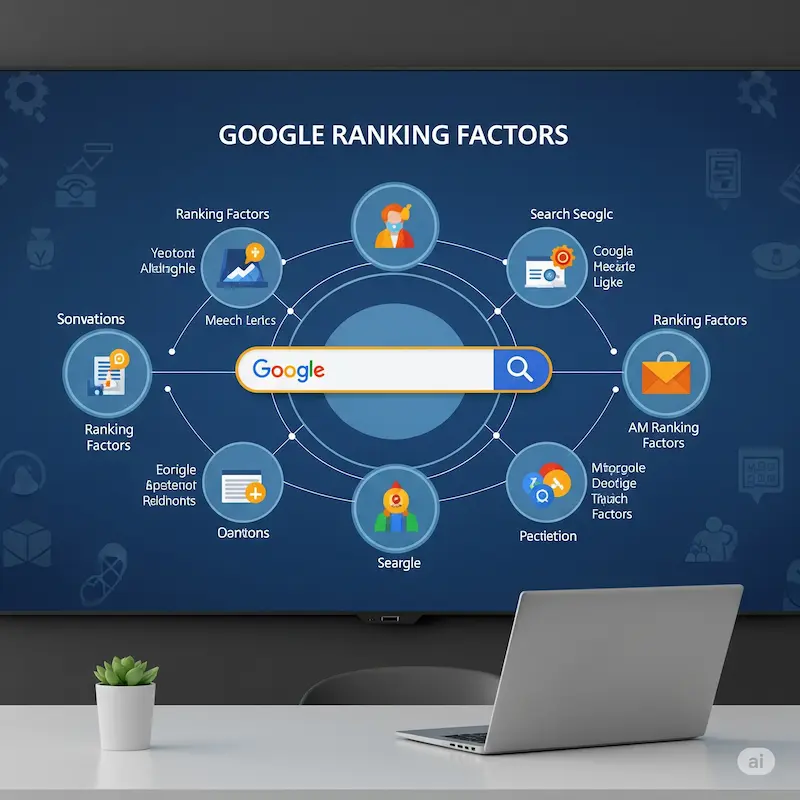For any business that serves a specific geographic area—be it a restaurant, a plumbing service, or a boutique—Local SEO is not a choice; it's a necessity. It’s the process of optimizing your online presence to attract more business from relevant local searches. Unlike traditional SEO, which targets a global audience, Local SEO helps you stand out in your neighborhood. This comprehensive guide will walk you through the essential steps to master local search and drive more foot traffic and phone calls to your business.
Table of Contents
- 1. The Cornerstone: Optimize Your Google Business Profile (GBP)
- 2. Build Trust with Positive Online Reviews
- 3. Ensure NAP Consistency with Local Citations
- 4. On-Page SEO: Let Your Website Speak Local
- 5. Get a Local Authority Boost with Link Building
- 6. Create Content That Resonates Locally
- 7. Conclusion
1. The Cornerstone: Optimize Your Google Business Profile (GBP)
Your Google Business Profile is the single most important factor in your local search strategy. It’s a free tool that allows you to manage your business’s presence on Google Search and Maps. To get started, claim and verify your profile. Then, focus on these key optimization steps:
- Complete all sections: Fill out every detail, including business hours, category, services offered, and a compelling description.
- Upload high-quality photos: Add pictures of your storefront, products, and team. Businesses with photos receive more requests for directions and website clicks.
- Utilize GBP Posts: Use posts to announce specials, events, or new products. This keeps your profile fresh and engaging.
- Add your products/services: A detailed list of your offerings helps Google match your business to relevant search queries.

2. Build Trust with Positive Online Reviews
Reviews are a critical ranking factor for local search. They signal to Google that your business is trustworthy and popular. More importantly, they build social proof and influence customer decisions. Here’s how to manage them:
- Encourage reviews: Proactively ask happy customers to leave a review on your GBP. You can use a QR code, an email follow-up, or a sign in your physical location.
- Respond to all reviews: Thank customers for positive reviews and address negative feedback professionally and constructively. This shows that you care about your customers.
- Monitor other platforms: Don’t just focus on Google. Keep an eye on reviews on Yelp, Facebook, and industry-specific review sites.
3. Ensure NAP Consistency with Local Citations
A local citation is any online mention of your business’s Name, Address, and Phone Number (NAP). These mentions can be on business directories (Yelp, Yellow Pages), social media profiles, or local chamber of commerce websites. The key is to ensure your NAP information is identical across all platforms. Inconsistent information can confuse search engines and harm your local rankings. Use a tool to audit your citations and fix any inaccuracies.
4. On-Page SEO: Let Your Website Speak Local
Your website is a powerful tool for Local SEO. Follow these on-page optimization steps:
- Target local keywords: Incorporate city and state names into your website content, especially in page titles, headers (H1, H2), and meta descriptions. For example, "Plumbing Services in Ho Chi Minh City."
- Create a dedicated contact page: This page should have your full NAP, a Google Map embed, and operating hours.
- Implement LocalBusiness Schema Markup: This code helps search engines understand what your business is, where it’s located, and other crucial details. It can improve your visibility in the local pack.

5. Get a Local Authority Boost with Link Building
Backlinks are still a crucial ranking factor. For Local SEO, the focus should be on acquiring links from relevant local sources. This signals to Google that you are a trusted part of the community.
- Local partnerships: Collaborate with other non-competing local businesses to exchange links or write guest posts.
- Sponsorships: Sponsor local events, sports teams, or charities. Many will list your business on their website.
- Media outreach: Get featured in local newspapers, blogs, or news sites.
6. Create Content That Resonates Locally
Develop a content marketing strategy that addresses the needs of your local audience. This can be a blog post about "The Best Hiking Trails near [Your City]" or a guide to "Local Events in [Your City] this Summer." This type of content attracts local traffic and reinforces your business's connection to the community.
7. Conclusion
Local SEO is a powerful tool for any business that relies on its local customer base. By focusing on the fundamentals—optimizing your Google Business Profile, managing reviews, ensuring NAP consistency, and building local authority—you can significantly improve your online visibility and attract more customers through Google Search and Maps.
Ready to take your business to the top of local search rankings? Contact us for a free, personalized Local SEO consultation to create a strategy that drives real results.


